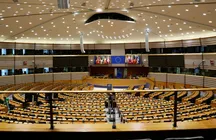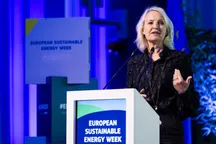
The consultation launched by ERA4Health these days aims to receive feedback on specific topics that could be included in the 2025 round of transnational calls to be published by the partnership in the following areas: cardiovascular diseases; nanomedicine; disorders related to diet and lifestyle, and prevention and public health.
This opportunity comes several months after the closing dates of the 2024 calls of the partnership.
What is the ERA4Health Partnership?
ERA4Health (E4H) is one of the 49 Partnerships provided by the Horizon Europe program with the aim of creating a system among European countries and individual funding bodies in specific areas of interest (in this case public health), thus generating a multiplier effect and promoting scientific collaborations within Europe.
Specifically, ERA4Health is a co-funded partnership, meaning a partnership created on one side by the European Commission (through Horizon Europe) and on the other by mainly public partners (32 organizations, 27 of which are funding agencies and bodies from 21 European countries) that focuses on national research funding agencies. In the case of E4H, coordination is entrusted to the Instituto de Salud Carlos III (Spain) and involves - on the Italian side - the Ministry of Research (MUR) and the Ministry of Health.
Like other Horizon Europe partnerships, E4H also operates mainly through the publication of transnational calls, with the ultimate goal of providing sustainable funding models for research activities aimed at addressing and reducing the incidence of diseases, focusing on the following challenges:
- The growing demand for better quality of life and patient care;
- The need to transform public health systems into effective, efficient, accessible, resilient, and equitable systems;
- The need to strengthen prevention and health promotion.
Given the significant role played by public funding bodies, participants in the ERA4Health calls are required to comply with both the rules set out in the European call and those contained in the national notices.
The ERA4Health consultation on the 2025 calls
Consisting of a ten-page document outlining the potential topics for the 2025 ERA4Health calls and an easy-to-complete online questionnaire, the public consultation launched on September 13 and active until the end of this month has a very clear objective: to promote and implement a decision-making process capable of involving the partnership's external stakeholders, thus achieving transnational calls that can capture the actual research needs present in Europe on these subjects.
The first topic on which stakeholders can potentially intervene is related to the research area aiming to “Understand the interaction between cardiovascular (CV) disorders and other disorders and/or therapies.” CV disorders are the most common cause of death worldwide. In this context, continuous research is therefore necessary to improve understanding, with a particular focus on multifactorial interactions. Among the objectives of the next call on the topic are, for example, expanding knowledge on how cardiovascular diseases affect the performance of other organs and systems and their ability to respond to therapies, or understanding how non-CV drugs or other therapeutic approaches affect the performance of the cardiovascular system (e.g., the effect of chemotherapy on cardiotoxicity).
The second topic that will be the focus of a 2025 partnership call concerns “Non-invasive diagnostic and theranostic tools through nanotechnology in non-communicable diseases (NCD).” This call aims to combine nanotechnology and/or key enabling technologies in the service of public health and individual patients, particularly through the development of non-invasive diagnostic and theranostic tools for NCDs. In this context, some of the possible topics that could be included in the call - and on which stakeholders can express their views - are: how to significantly improve prevention and early diagnosis for a range of NCDs; exploring new clinical applications of nanotechnology based on fundamental concepts such as surface chemistry, fluid dynamics, and biophysics, etc.; or defining new standards of sensitivity and specificity for better patient stratification and safety.
In 2025, a call is also planned on “Nanotechnological approaches in therapy and interventions.” This is a very relevant topic as advances in nanomedicine have profound potential for transformative therapeutic interventions, particularly in areas where conventional treatments have limitations. In this context, among the possible objectives of the next call could be areas such as the ability to leverage the precision and versatility of nanomaterials to revolutionize gene and cell therapy, particularly through better engineering, synthesis, and delivery of RNA and DNA materials, offering new treatments for untreated diseases; or improving clinical translation and effectiveness in nano-enabled regenerative medicine.
Another topic in the consultation is related to “Health consequences of modern lifestyles and diets.” Scientific evidence highlights the role of lifestyle and diet in health, particularly in the prevention and progression of both physical and mental health conditions. Although these connections are well established, there is a significant gap in understanding how to effectively translate this knowledge into practical contexts. For example, it is unclear how zoning (regulations, urban planning...) could be used to facilitate healthier lifestyle behaviors. In light of this, the next call should promote research capable of investigating how health inequalities are related to socio-economic and geographical areas; or the health consequences of plant-based diets and other changes in eating behaviors.
“Understanding overweight and obesity: early detection, risk indicators, prevention, and public policies” is the title of the fifth call expected to be launched in 2025.
Overweight and obesity are two major social challenges and often risk factors associated with unfavorable prognoses and the development of multiple disorders such as diabetes, cancer, respiratory or cardiovascular diseases. In this context, the future call should promote the development of preventive and predictive approaches beyond the "state of the art" capable of addressing overweight and obesity; or co-create with healthcare providers, patients, researchers, and other relevant stakeholders, tools to predict the influence of overweight and obesity on the onset and progression of other disorders.
Finally, the consultation closes on the sixth topic related to “Environmental determinants of health behaviors: prevention strategies and public policies.” A healthy environment is essential to ensure healthy lives and promote well-being for all at all ages. Urbanization and industrialization expose citizens to co-exposure to various environmental stressors such as air pollution, chemicals, noise, or waste, as well as facilitators of risky behaviors such as long commuting times, unhealthy built and food environments. In light of this, the purpose of the call will be, for example, to understand and assess the effects of environmental determinants of health, including health behaviors; or to expand effective strategies/initiatives that promote healthier behaviors and communities.
For more information on the public consultation, visit the official website
Photocredit: StockSnap en Pixabay
AI assisted translation







